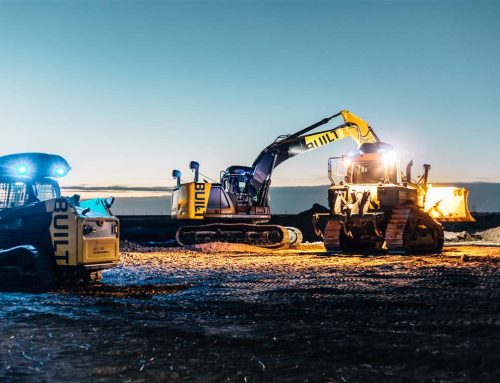Robotics in the construction industry
The first applications of robotic technologies to the construction industry were designed in Japan during the 70’s, in order to improve the quality of prefabricated ele- ments for modular residential buildings. Since then, robots started spreading in the construction industry, slowly mov- ing from factories to actual construction sites [1, 2, 3]. Dif- ferently from other industry fields, where the introduction of robotics technologies radically changed the way human workers operate, the construction industry has not fully ex- perienced its “robotic revolution” yet. As a result, various operations that require high power and/or high accuracy (such as panel positioning, plumbing, material handling) are still manually performed by human workers in very in- efficient and dangerous ways. Not by chance, some studies strongly suggest that productivity in the construction in- dustry has been declining over the last decades [4] and that the conventional construction paradigm has reached its technological performance limit [5]. Even though the barriers that are preventing robots to spread within the con- struction industry are well known, some recently emerged trends started fostering the adoption of novel technologies.As far as scientific research is concerned, there is no doubt that also the robotics community has demonstrated a growing interest towards applications in the construction industry in the last 15-20 years. Not by chance, the num- ber of scientific publications targeting construction scenar- ios has experienced a significant growth over the last two decades, as it is demonstrated by Figure 1. From the ap- plication point of view, these scientific publications have confronted almost every construction-related application context. Naturally, heavy-duty operations have been tack- led, like for instance façade installation [6, 7, 8], forestry [9], mining [10] and generic earthworks [11, 12]. Several solutions have also been developed in order to facilitate in- spection of buildings and infrastructures [13, 14, 15]. Fi- nally, in accordance with the trends that will be introduced in the following sections, more recent contributions tack- led novel application contexts like for instance realization of wooden buildings [16], interior and exterior renovation [17, 18, 19, 20], additive manufacturing [21, 22] and also decommissioning of nuclear power plants [23, 24].
On the other hand, as far as research topics are con- cerned, construction-related contributions have explored both consolidated and recent topics in the robotics field: inverse kinematics calculations [25, 26], control architec- tures [27, 28, 29], trajectory planning algorithms [30], teleoperation strategies [31, 32], Human-Machine Inter- faces (HMIs) [33, 34], autonomous vision [35, 36], [37], usage of Unmanned Aerial Vehicles (UAVs) [38]. An- other topic that is worth mentioning is represented by the integration with Building Information Modelling (BIM) [39, 40, 41].



